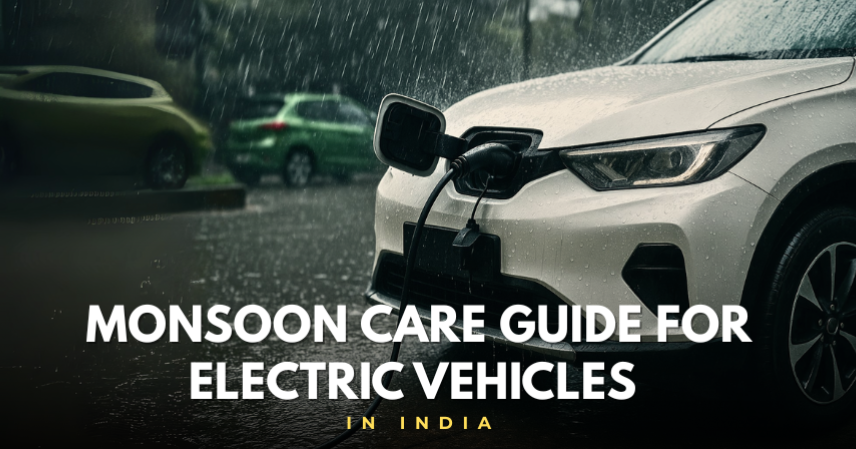The monsoon season brings with it a refreshing respite from the heat, but for electric vehicle (EV) owners in India, it also introduces a host of challenges. Unlike internal combustion engine (ICE) vehicles, EVs require special attention during the rainy season to ensure safety, efficiency, and longevity. This comprehensive monsoon care guide for electric vehicles in India will walk you through the best practices, essential maintenance tips, and expert advice to keep your EV in peak condition throughout the wet season.
Why Monsoon Care for EVs Matters
EVs are built with advanced electronic systems, high-voltage batteries, and intricate sensors, which can be sensitive to water ingress, humidity, and poor road conditions. Here’s why monsoon-specific care is crucial:
- Prevent short circuits from moisture exposure.
- Enhance battery performance and lifespan.
- Ensure regenerative braking works efficiently.
- Protect EV charging infrastructure from rain damage.
- Maintain optimal road grip with wet-weather tire maintenance.
Monsoon EV Maintenance Tips
1. Battery Care is Crucial
Your EV’s battery is the most critical component. During the monsoons:
- Check for insulation and sealing. Make sure the battery casing is watertight.
- Avoid driving through water-logged roads, as water seepage can damage the battery management system.
- Park in dry or covered areas to protect from excess humidity.
2. Regular Brake Checks
Electric vehicles utilize regenerative braking systems, which require functioning electronic sensors:
- Moisture can reduce braking efficiency. Clean and test brakes regularly.
- If you hear unusual noises or feel reduced responsiveness, visit an authorized service center.
3. Tire Maintenance for Better Traction
Monsoon roads are slippery and dangerous. Proper tire maintenance is essential:
- Maintain optimal tire pressure to avoid aquaplaning.
- Check for sufficient tread depth—replace tires that are worn out.
- Clean mud and debris off tires after every ride.
4. Waterproofing Critical Electrical Components
Even though most EVs come with waterproof designs (IP67-rated components), extra caution is wise:
- Use dielectric grease on exposed connections to prevent moisture damage.
- Inspect wiring harnesses and connectors after driving in heavy rain.
5. Check Wipers and Washers
Visibility is paramount:
- Replace old or brittle wiper blades.
- Ensure washer nozzles are unclogged.
- Top up windshield washer fluid with a rain-repellent solution.
6. EV Charging in the Rain: Do It Right
Charging an EV during the monsoon must be done safely:
- Only use manufacturer-approved, weatherproof chargers.
- Do not charge outdoors in heavy rain or near water sources.
- Install a leak-proof EV charger enclosure if you’re using home charging.
7. Rust Prevention
Even though EVs have fewer metal parts than ICE vehicles, rust is still a threat:
- Apply anti-rust coating on the underbody.
- Regularly wash off mud and rainwater residues from the wheel wells and chassis.
8. Protect the Interior
High humidity can damage seat fabrics and cabin electronics:
- Use silica gel pouches or car dehumidifiers inside the cabin.
- Opt for waterproof floor mats.
- Wipe down the dashboard and touchscreen regularly to avoid moisture buildup.
Monsoon Driving Tips for EV Owners
Driving an EV in wet conditions demands extra caution:
| Tip | Description |
|---|---|
| Drive Slowly | Reduces the risk of skidding or battery jolt. |
| Avoid Puddles | Water can hide potholes that may damage your underbody. |
| Use Low Beams | For better visibility and reduced glare. |
| Enable Regenerative Braking | Helps maintain better control on wet roads. |
| Keep Range Buffer | Rain can impact battery efficiency. Don’t drive with low charge. |
Best Accessories for Monsoon EV Protection
| Accessory | Use |
|---|---|
| All-weather car cover | Protects from heavy rain and dirt |
| Anti-rust spray | Prevents rust formation |
| Portable vacuum cleaner | Keeps interiors dry and clean |
| Waterproof charger box | Safe home charging |
| Tread-depth gauge | For checking tire health |
EV Service Checklist Before the Monsoon
Here’s a quick pre-monsoon checklist every EV owner should follow:
- Check battery and connectors
- Inspect tires and brakes
- Ensure lights and wipers are working
- Clean air filters
- Get software updates for rain-related driving optimizations
- Confirm water-sealing of EV components
FAQs on Electric Vehicle Care During Monsoon
Q1: Can I drive my EV in heavy rain?
Yes, most EVs are water-resistant and come with an IP67 rating. However, it’s best to avoid driving through deep water or during extreme rain to prevent damage to electrical components and ensure driver safety.
Q2: Is it safe to charge my EV during rain?
It is safe only if you’re using an IP-rated charger in a sheltered or enclosed area. Avoid charging in open rain or with makeshift adapters. Use OEM-approved chargers and maintain dry, sealed connections.
Q3: Does rain reduce EV battery efficiency?
Yes, high humidity and lower temperatures during monsoon can marginally reduce battery performance. Expect a 5–10% drop in range, especially if you’re using air conditioning frequently.
Q4: How do I protect my EV from rust during monsoon?
Apply underbody anti-rust coating, wash the car regularly to remove mud and water residue, and dry the EV after each wet journey. Avoid long exposure to standing water or salty roads.
Q5: Can water damage my EV’s motor or electronics?
Water-resistant seals are standard in EVs, but damage can occur if the seals wear out or if you drive through deep water. Routine inspection and waterproofing measures can help prevent this.
Final Thoughts
Electric vehicles are paving the way toward a greener future, and caring for them during the monsoon season is a small effort with long-term benefits. From maintaining the battery and brakes to ensuring safe charging practices, these tips will help you enjoy worry-free drives even during the heaviest downpours.
Whether you’re a daily commuter or a weekend EV rider, implementing these expert-backed practices will enhance your EV’s durability, performance, and resale value. Don’t let the rains rain on your EV journey—gear up, power on, and ride safe.

